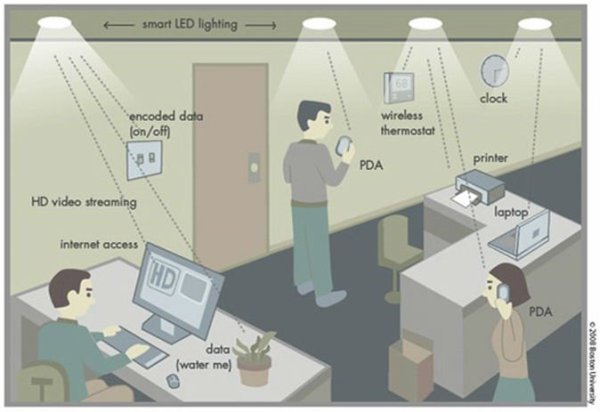



 (1 rate)
(1 rate)
In today's world everything revolves around Internet and its services. Right from ticket reservation to movie tickets to food ordering, everybody tries to use Internet and Wi-Fi. The way human beings access internet can completely change forever. Now if scientists are to be believed, very soon Wi-FI would get replaced with Li-Fi. Li-Fi is nothing but a wireless technology that transmits high-speed (insanely high-speed) data using Visible Light Communication, or VLC.
Scientists also claim that while researching they were able to gain speeds of up to 224 gigabytes per second in the lab using Li-Fi and to test it in real world scenario, they have taken Li-Fi out of the lab for the first time, and are currently testing it in Tallinn, Estonia. The scientists are confident enough to achieve speeds of up to 1 Gb per second at a work environment which is approximately 100 times faster than the average Wi-Fi speeds that we currently have around the world.

The technology uses Visible Light Communication (VLC), a medium that uses visible light between 400 and 800 terahertz (THz). It works basically like an incredibly advanced form of Morse code - just like switching a torch on and off according to a certain pattern can relay a secret message, flicking an LED on and off at extreme speeds can be used to write and transmit things in binary code. To understand the technology in a better way, please take a look at the video below:
Deepak SOlanki, CEO of Estonian tech company, Velmenni quoted -
"We are doing a few pilot projects within different industries where we can utilise the VLC (visible light communication) technology,".
He further added
"Currently we have designed a smart lighting solution for an industrial environment where the data communication is done through light. We are also doing a pilot project with a private client where we are setting up a Li-Fi network to access the Internet in their office space.”
This technology was first invented by Harald Haas from the University of Edinburgh, Scotland back in 2011, who demonstrated how the flickering light from a single LED could transmit far more data than a cellular tower! The most important factor which can lead to its success is that this technology is a lot more secure which when combined with Wi-Fi technology can be used together to achieve more efficient and secure networks.
Haas even quoted that:
"All we need to do is fit a small microchip to every potential illumination device and this would then combine two basic functionalities: illumination and wireless data transmission,". "In the future we will not only have 14 billion light bulbs, we may have 14 billion Li-Fis deployed worldwide for a cleaner, greener, and even brighter future." If this technology does pan out, and it comes to India, it would mean everyone who has an LED light bulb would have access to the internet.